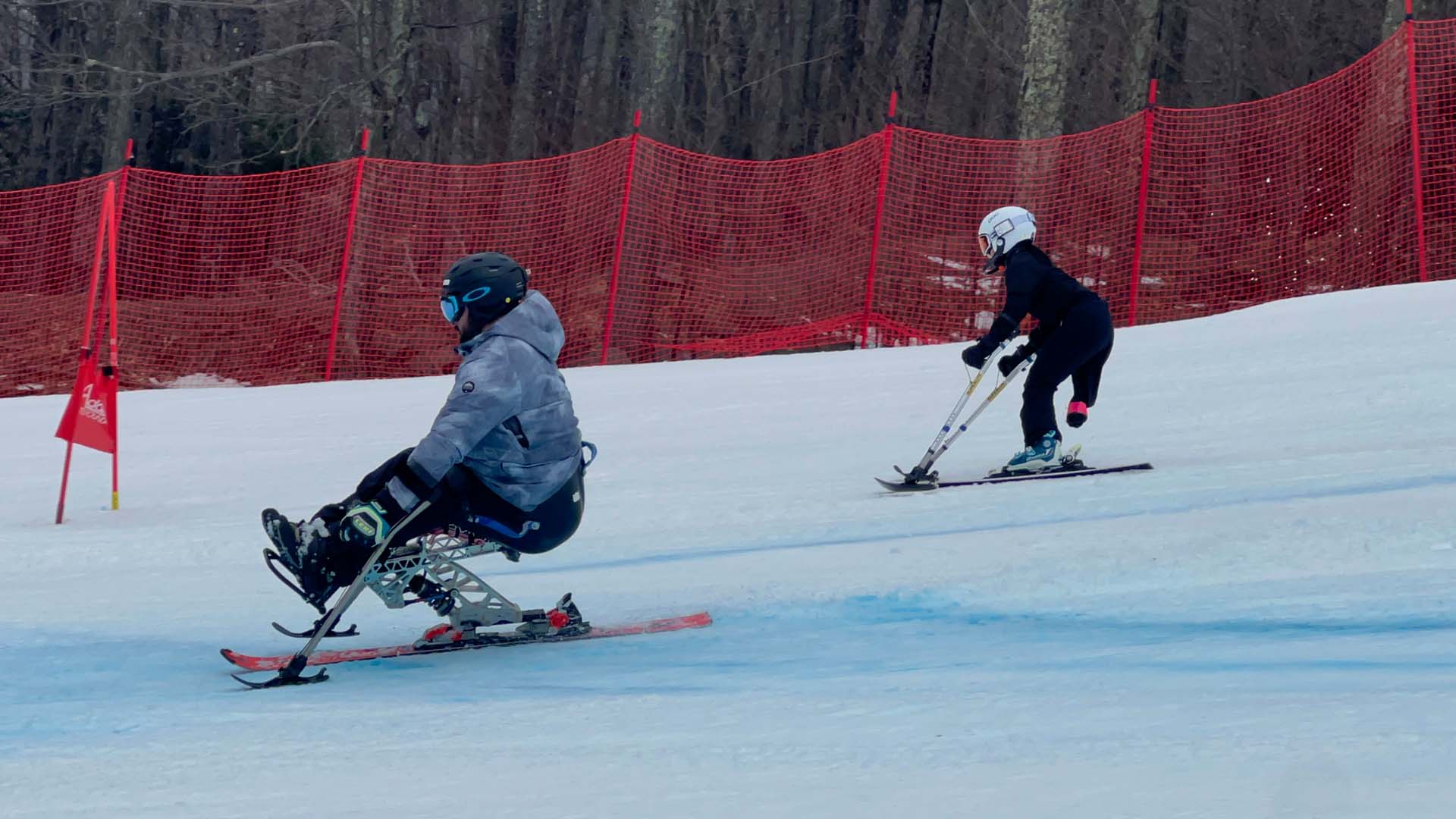We understand that the world of Adaptive Snowsports can be a bit daunting to get started with. You might have a picture of skiing or snowboarding in your mind that appears inaccessible to folks with disabilities. Fortunately, at ASF, we have the adaptive equipment and the technical skills to get anybody on snow. This starts with understanding what kind of lesson would be best for you. Read below to see all of our adaptive equipment and what might be best to support your snowsports journey!
2-Track Skiing
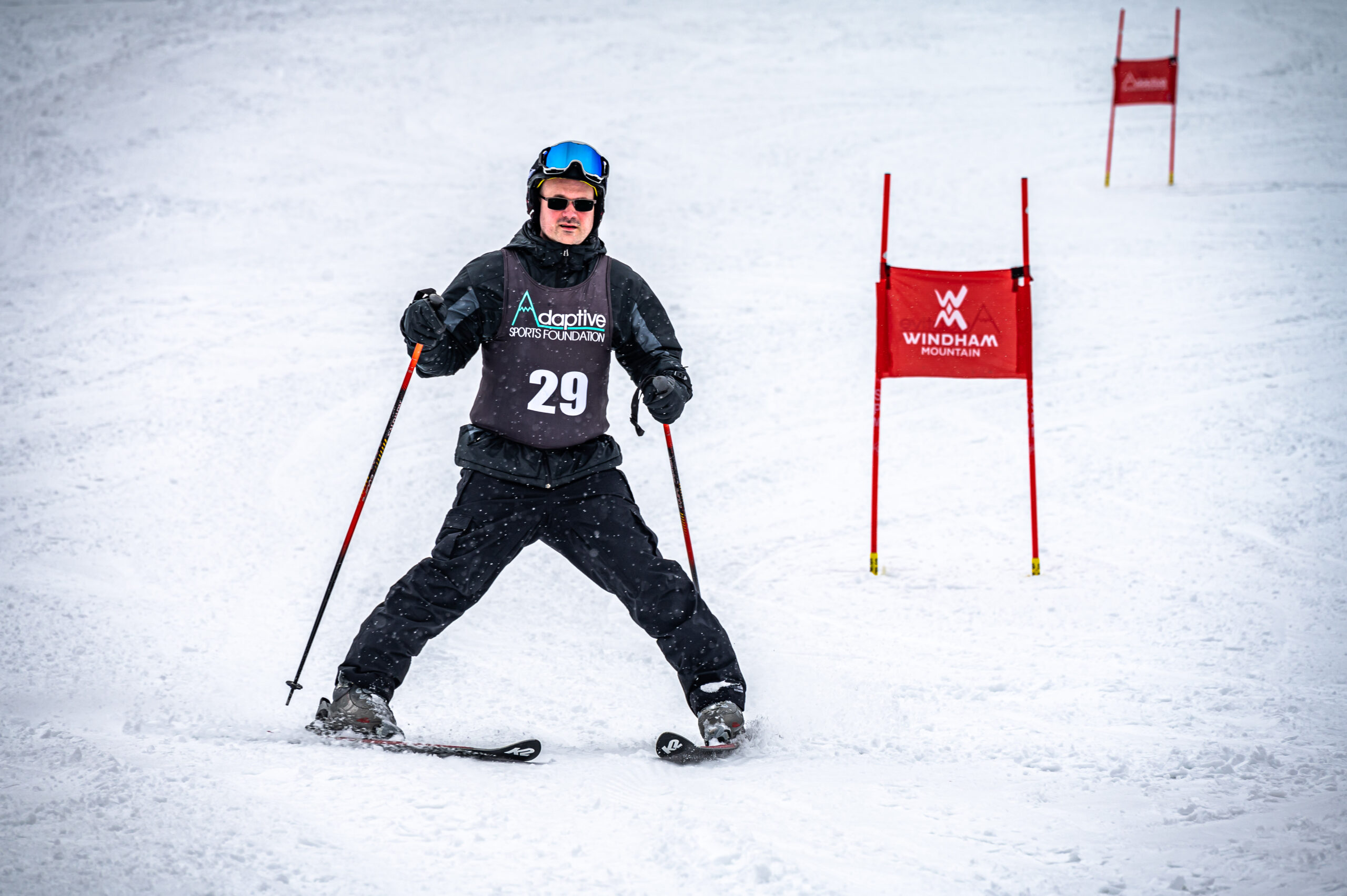
Skiing is a great sport to get started with! 2-track skiing is likely what you imagine -someone on two skis, moving down the hill. When students can ski independently, it opens a whole world of opportunities for physical and social development. Most of our 2-trackers have a cognitive disability or visual impairment.
Adaptive Advantages
– Being able to move both feet independently allows the participant to balance easier.
– There are plenty of adaptive devices used to stabilize the skis to reduce the amount of balance and strength needed to stay upright.
– The student can be tethered from behind with a climbing harness and rope tethers to aid in speed control and turn initiation.
– The student can progress to full independence!
Snowboarding
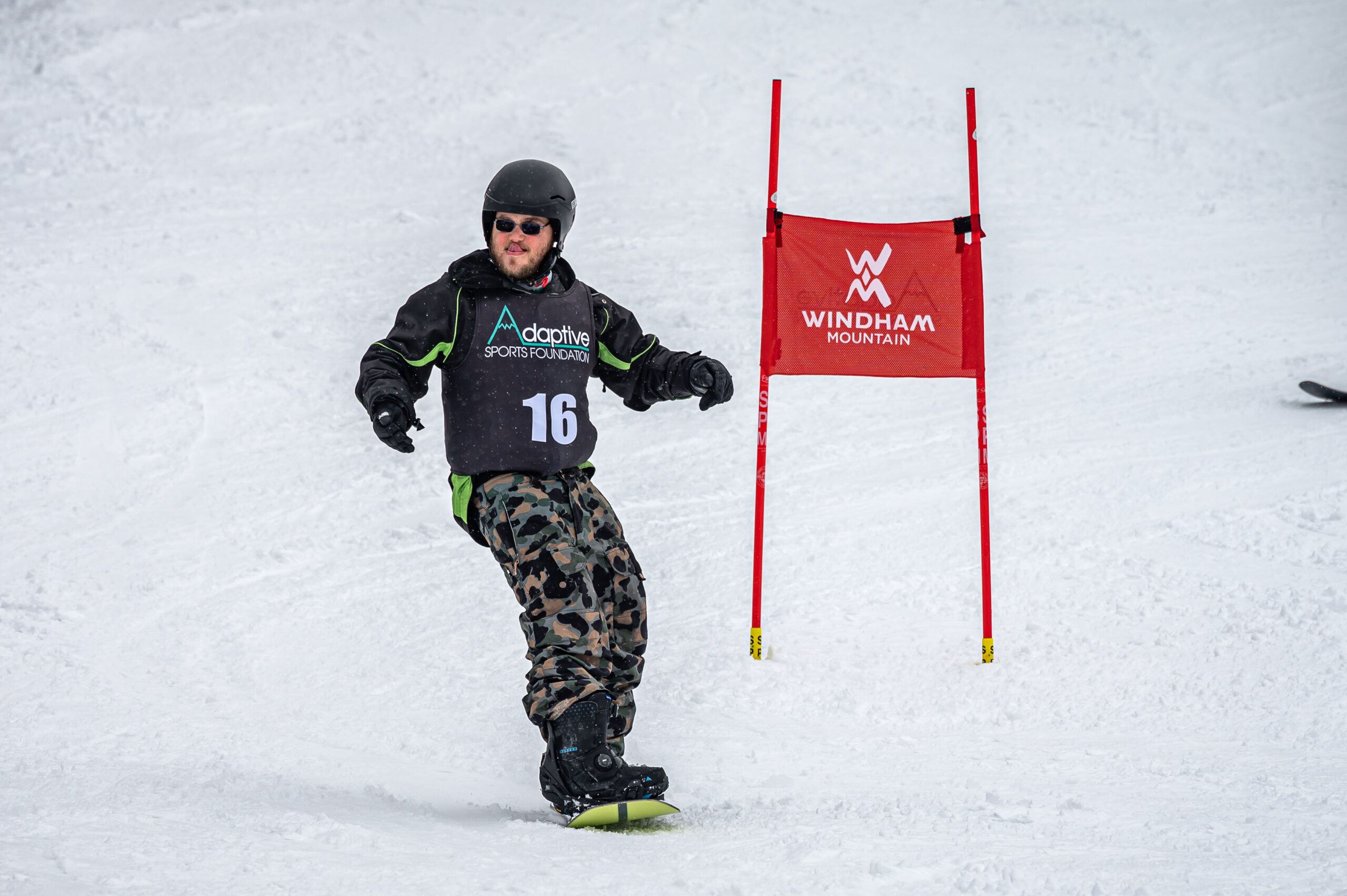
Unlock your inner shredder by snowboarding! Snowboarders come in many shapes and sizes here at ASF, and they all have a lot of fun ripping up the mountain. Like skiing, when students can snowboard independently, the endless possibilities of the mountain and ski/snowboard culture begin to come within reach. We teach snowboarders with cognitive disabilities, physical disabilities, and visual impairments.
Adaptive Advantages
– Both feet being strapped into the same board make snowboarding great for folks with one below the knee amputation and folks with decreased strength in one leg.
– Snowboarding is difficult to learn for some people, but once you start making turns, the learning curve lessens.
– Currently at ASF, it is easier to get a snowboarding lesson than a ski lesson, so if ski lessons are sold out, consider snowboarding!
– The student can progress to full independence!
3-Track Skiing
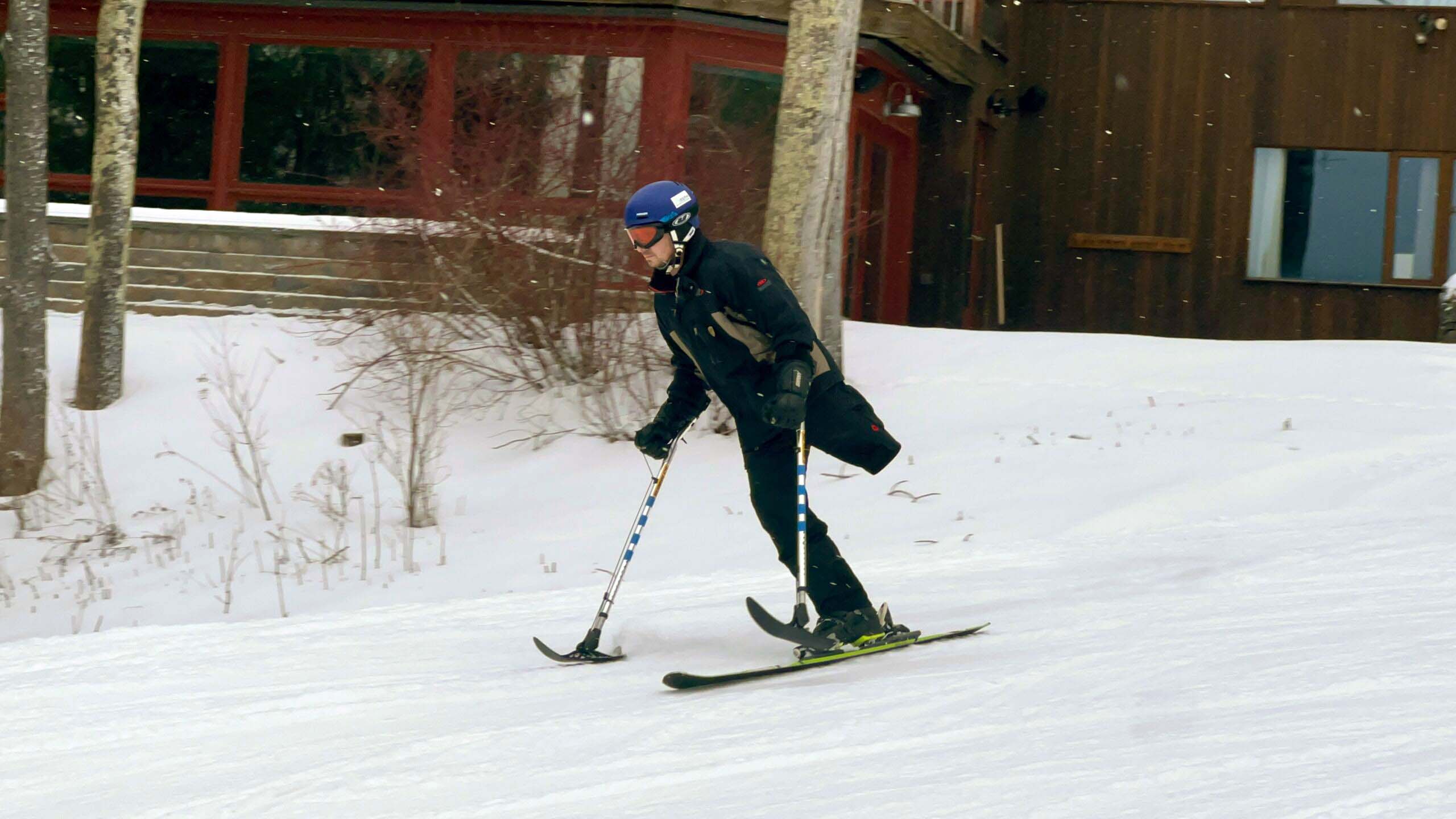
3-Tracking or simply “3T” refers to skiing with one ski and two handheld outriggers. When you 3-track, you leave three tracks in the snow. Handheld outriggers are similar in structure to forearm crutches with small plastic skis on the bottom. Typically a 3 tracker has one limb either due to amputation or from birth, however there are some folks who have both limbs who still 3-track.
Adaptive Advantages
– Appropriate for above and below the knee amputations.
– Handheld outriggers allow for easy static balance when stopping on the hill to rest.
– The student can progress to full independence!
4-Track Skiing
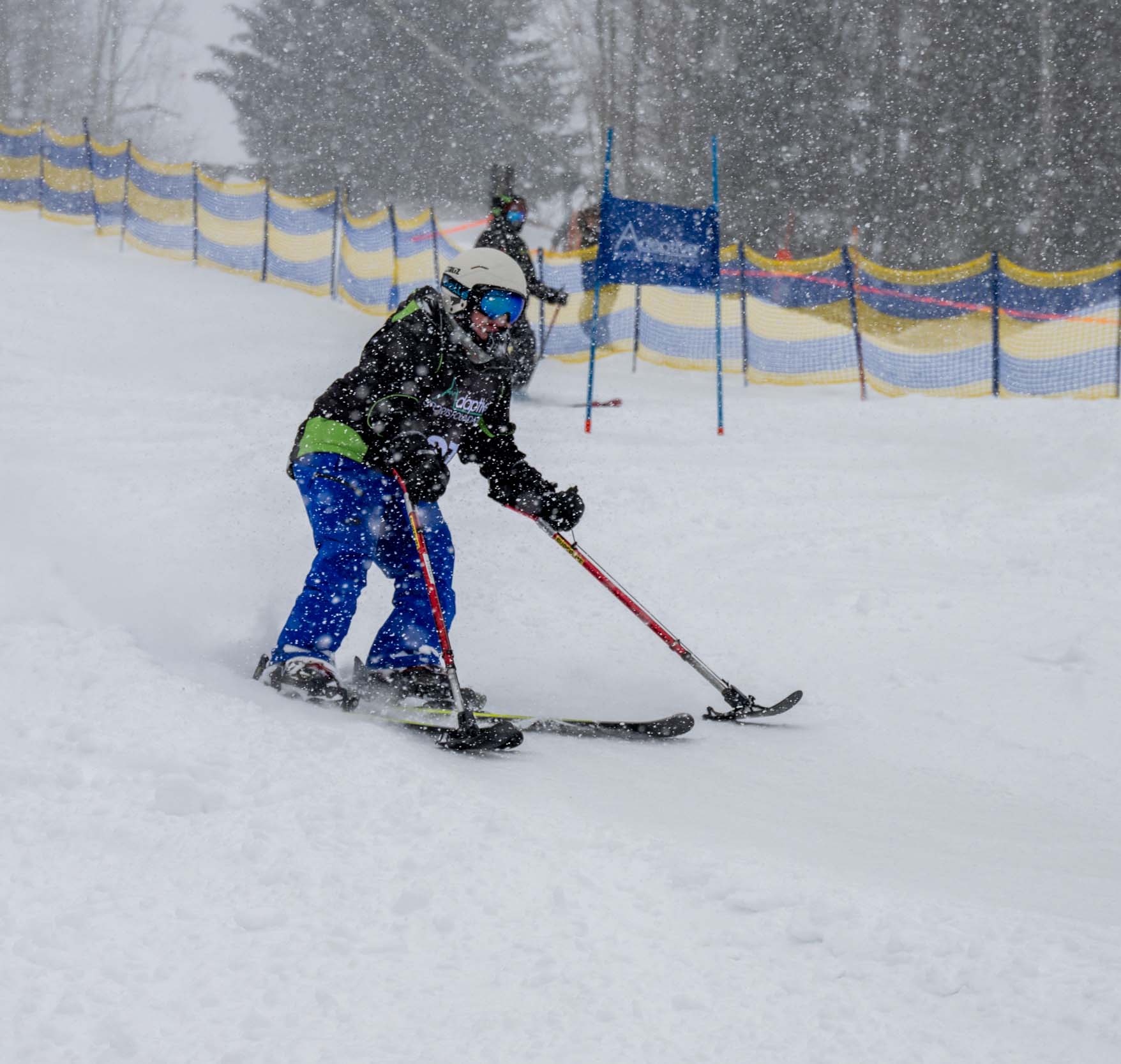
Similar to 3-tracking, 4-tracking or “4T” uses handheld outriggers, but these students have two skis. These students get their name from the four tracks that they leave in the snow. 4-tracking is great for someone who walks with the use of canes or a walker. Folks with decreased muscle tone in their lower body can support themselves on the hill with the outriggers in a way to achieve independent skiing.
Adaptive Advantages
– Appropriate for a wide variety of disabilities including cerebral palsy and spina bifida
– We have many outriggers which are adjustable to find the right fit for you
– Like 2-tracking, there are many adaptive devices that can be added to the skis for increased stability, and the student can be tethered from behind if needed.
– The student can progress to full independence!
The Snow Slider
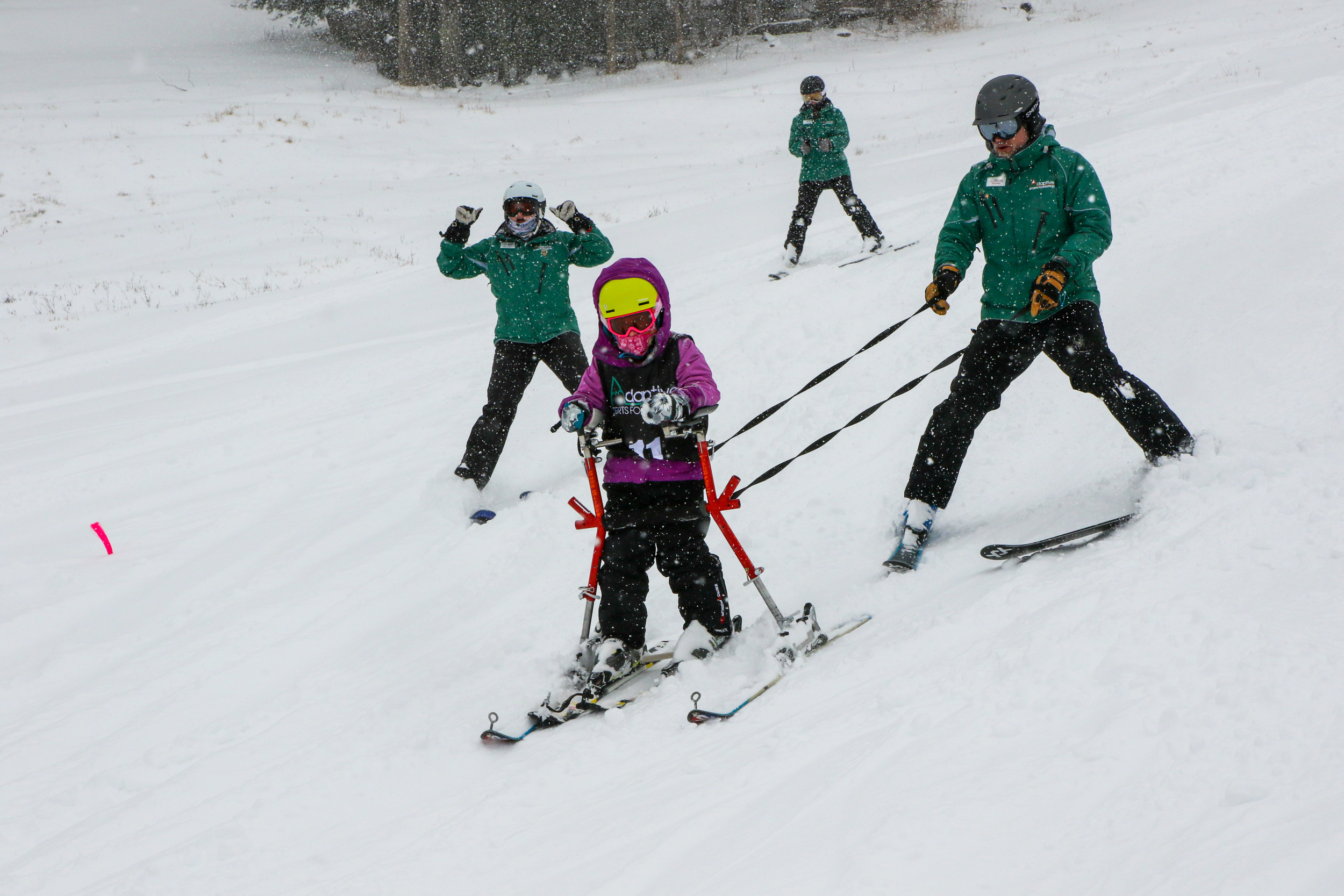
The Snow Slider is basically a walker on skis. The student rests their forearms on the platforms and uses their upper body to support their lower body. Considered a type of 4-tracking, both the slider and the student are on their own skis. The student stands within the base of support created by the Snow Slider. An instructor tethers the student from behind in order to control the student’s speed and influence their turns. This is a great device for someone who uses a walker or canes to walk around and needs mores support with dynamic balance. The Snow Slider is ALWAYS tethered from behind by the instructor.
Adaptive Advantages
– The Snow Slider is very adjustable and can be fit to many different body sizes.
– The instructors can provide a varying level of support with the Snow Slider depending on the needs of the student.
– The Snow Slider is a good choice for someone with decreased lower extremity strength or general low muscle tone due to a stroke, cerebral palsy, etc.
– While the student will never ski fully independently from The Snow Slider, we have students who begin their journey on the Snow Slider and eventually become independent 4-trackers.
Bi-Skiing
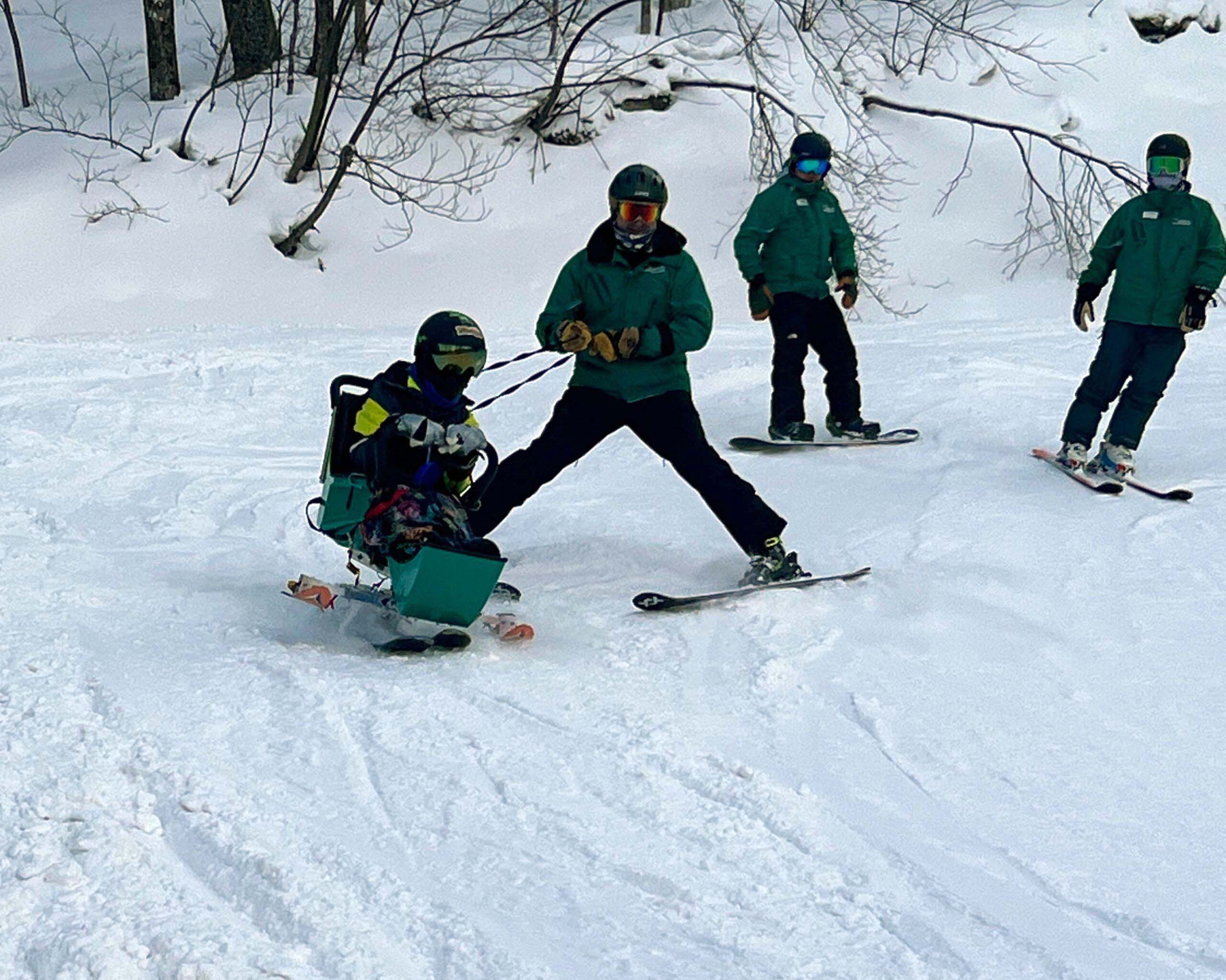
The Bi-Ski is a bucket seat connected to a pair of articulating skis with a shock suspension. The student sits in the bucket and is strapped in securely. Bi Skis are ALWAYS tethered from behind by the instructor. The student can use small handheld outriggers to help control their turns if they have that level of upper extremity strength. Folks with limited upper extremity strength or motor control can keep their hands inside the bucket and enjoy the ride as the instructor becomes in full control. For these students, we have fixed outriggers that attach directly to the bi ski, much like outriggers you might see on a boat or canoe.
Adaptive Advantages
– Able to accommodate a very wide range of physical abilities. Students can have no voluntary movement and still enjoy skiing with this device.
– Very short learning curve – students will ride the lift and experience much of the mountain on their first day. There is no time spent at the beginner area.
– Bi Skiers who use handheld outriggers may be able to progress to independent monoskiing.
Monoskiing
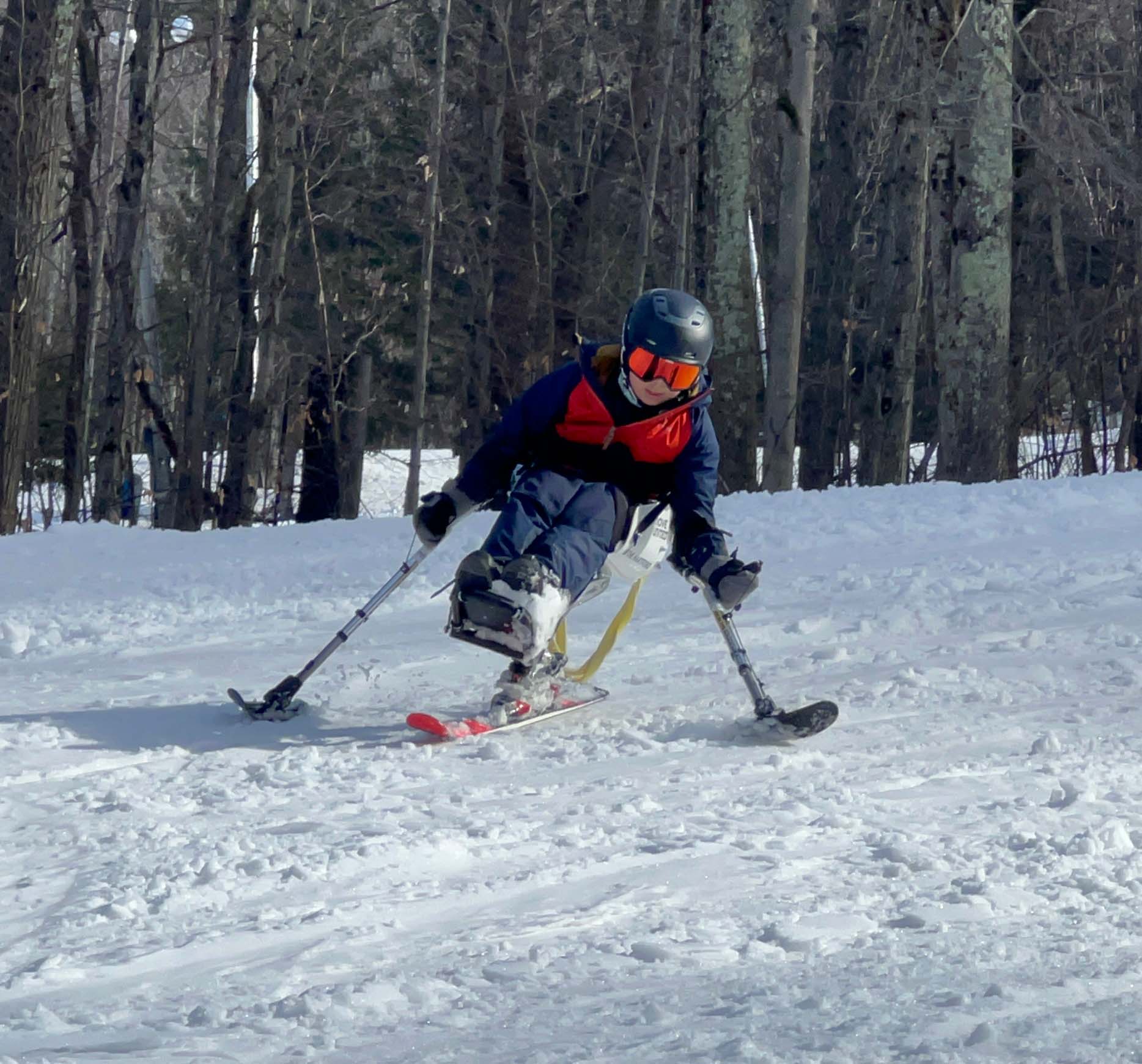
The Mono Ski is similar to the Bi-Ski, only this is a bucket seat connected to one ski with a shock suspension. The student will use handheld outriggers to help with balance and forming their turns. Monoskiing is ideal for folks with spinal cord injuries, lower extremity amputations, or decreased strength or paralysis in the lower extremities, but strong upper extremities. Unlike Bi Skiing, Monoskiing has a very steep learning curve which requires a lot of patience and time spent on the beginner slope. This may be difficult for someone who once was an intermediate or expert skier before sustaining a spinal cord injury, as they have to return to the beginner slope and relearn. With monoskiing, full independence is always the goal.
Adaptive Advantages
– Provides an avenue for many people re-enter the world of skiing after a spinal cord injury
– Professional Monoskiers are becoming more recognized and it is easier to find role models in the sport – i.e. Trevor Kennison, Jay Rawe, Full Circle on Netflix
– The student can progress to full independence!
The Snow Kart
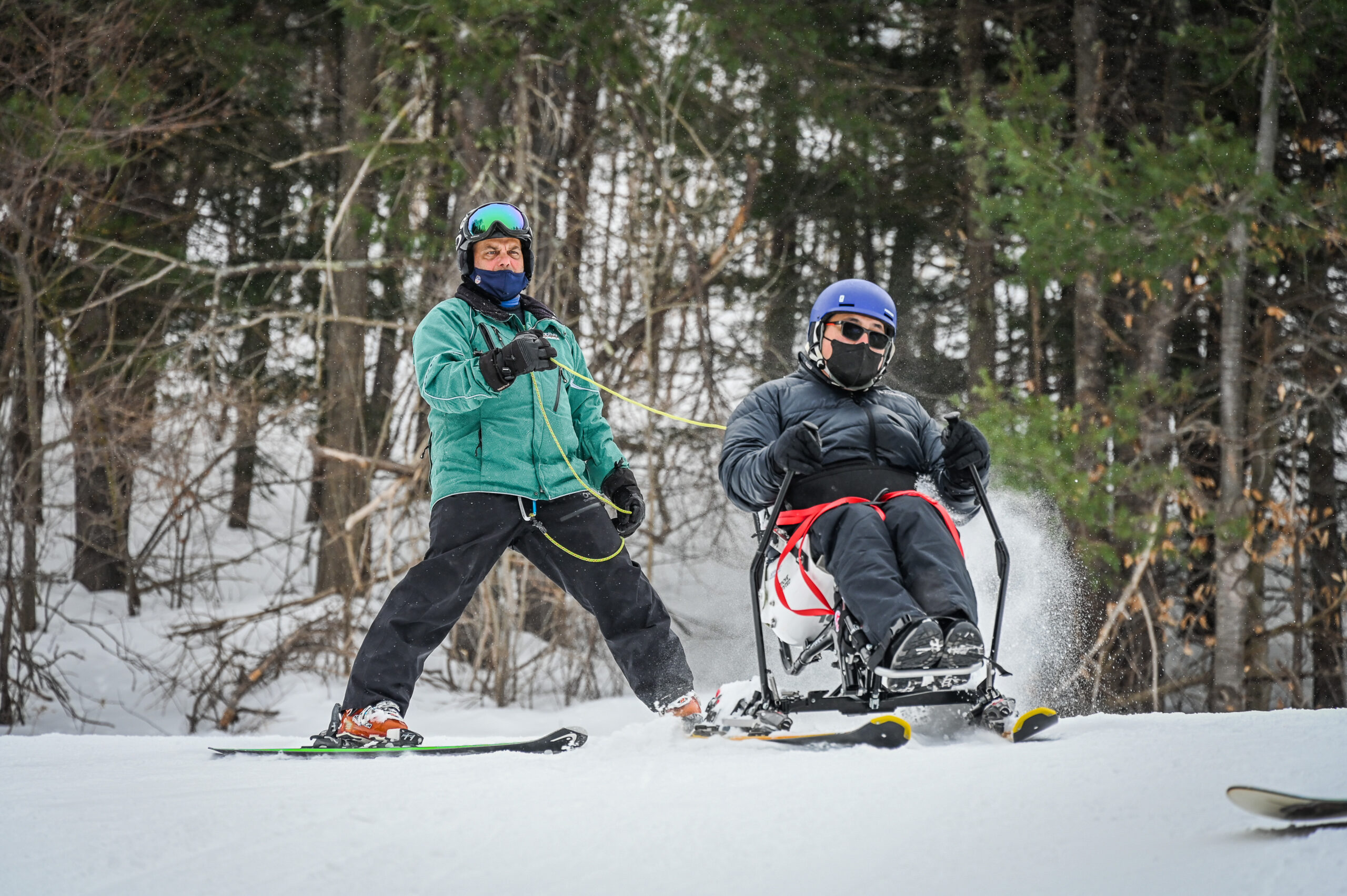
The Snow Kart is an extremely unique piece of equipment that we are lucky to have at ASF. The Snow Kart is a type of sitski, like the mono and bi skis, except the skis sit wide under the bucket and have two long lever arms that extend up. The student sits in the bucket and, using these lever arms, is able to control their speed by putting the skis into a wedge or applying the breaks. The student is also in complete control of their turn shape by using these levers. Currently, all of our Snow Kart students are tethered from behind by an instructor who acts as emergency breaks, but the student is the one who is primarily in control.
Adaptive Advantages
– Short learning curve – students will ride the lift and may experience much of the mountain on their first day. There is no time spent at the beginner area.
– The lever arms can be joined together, meaning as long as the student has use of one arm, they can use this equipment.
– Can accommodate a wide range of physical disabilities.
– The student is in control of their turn shape and speed, experiencing near full independence with the instructor as a safety net.
